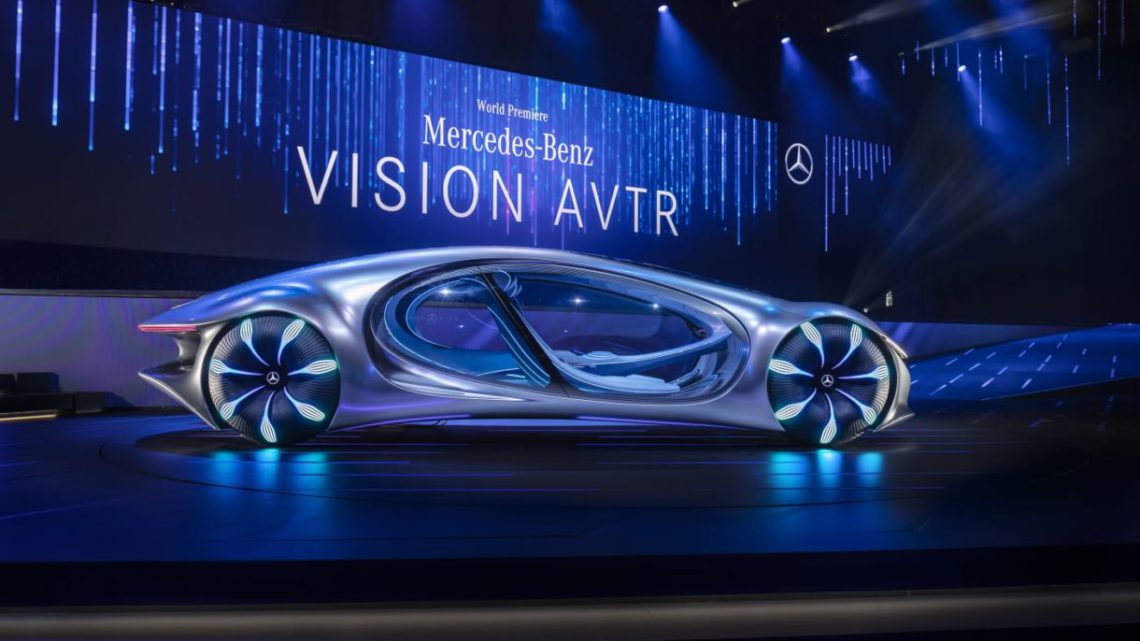
Where would you find a social humanoid robot named Sophia, a futuristic car inspired by the movie Avatar, and high-ranking government officials all in one place? At the world’s most prestigious technology conference, dubbed “the global stage for innovation”—CES.
At this year’s event, over 100,000 people from all walks of life came to Las Vegas, NV to see what’s next in the world of technology. Exploring CES’s elaborate showroom, the U.Group team was blown away by the number of innovative technologies expertly designed to make our lives easier, more efficient, and frankly, more fun. From drone food delivery services to brain sensing VR devices, many of the tech gadgets on display at CES have the opportunity to truly transform the human experience. It was amazing to reflect on the advancement and the sophistication of all the new technologies on display. We have certainly come a long way since the release of the first iPhone.
Top 3 Takeaways from CES 2020
CES isn’t just about shock and awe, however—though there is a lot of that. People come out to inspire and get inspired, to learn about new trends and get ahead of others. They come for comradery, culture, and collaboration. Some are seeking new partnerships, and others are trying to gain a leg up on the competition.
Though we experienced elements of all of these, the U.Group team was at CES to create connections and learn more about the technologies transforming lives, disrupting industries, and impacting culture. Here are top trends we noticed that have the possibility to do all three.
Smart home technology to transform our everyday lives

Design naturally played a big role in the advancement of technology. This trend was most evident in the evolution of home and lifestyle products. Some of these gadgets were simple upgrades of existing products, only reimagined with sleeker designs and built-in smart technologies. Take smart locks, for example.
The beautifully-designed Lockly Vision smart lock is a home security device that has a built-in doorbell camera and a fingerprint scanner all in one. The Lockly vision is eliminating the need for people to carry around bulky keys or buy multiple products to achieve their home security objectives. By observing human behavior and noticing core customer challenges, Lockly combined and enhanced products that are already on the market to make our everyday lives easier. Simple, but genius.
The Knectek Townew trashcan is another great example of advancement in home technology. Its sleek design has the ability to fit in any modern home environment, but its true value isn’t in aesthetics only. The Townew’s built-in sensors let users know when it’s time to take the trash out and then automatically changes its own liner. Which begs the question: Will there be any chores left for future generations to do? Only time will tell.
Advancements in the automotive industry

One of CES’s biggest draws came from Mercedes. The legendary automobile manufacturer stole the show by unveiling a concept car that will never actually come to market—the Mercedes Benz Vision AVTR. This futuristic concept car inspired by the 2009 movie Avatar was designed to show the market what Mercedes has in mind for future advancements in design, usability, and sustainability.
Based on what the car brand unveiled, Mercedes plans to create cars that merge man and machine by literally recreating the wheel—the steering wheel, that is. Mercedes eventually aims to eliminate the steering wheel by replacing it with a control pad that senses the driver’s movements. Responding to consumer demand for sustainability and humane resourcing, Mercedes also made a point to use recycled plastic and vegan leather for their luxurious interiors.
The Vision AVTR was an innovative way for Mercedes to communicate their future goals in a way that the public could see, hear, and feel in the present time. Demonstrating their current capabilities and long-term vision was enough to attract new customers and keep competitors on their toes—even though the product can’t be purchased.
Artificial intelligence, augmented reality, & virtual reality in the government

Human-centered technologies like artificial intelligence (AI), augmented reality (AR), and virtual reality (VR) are inspired by the ways humans and machines interact. World-renowned brands, startups, and even governments are turning to these types of disruptive technologies to improve processes, automate systems, and make reaching goals easier.
For instance, the U.S. government plans on developing public-private partnerships to redesign urban landscapes and create ‘smart cities.’ A smart city is an urban area that uses Internet of Things (IoT) sensors to collect data. Insights from this data are then used by government officials to manage assets, resources, and services more efficiently. By leading with a technology-first strategy, smart urban planning improves the quality of life for residents (hello, free WiFi in public parks), while also creating efficiencies, improving sustainability, and enhancing economic development. Talk about a game changer.
Other game-changing advancements being leveraged by the U.S. government come in the form of AR and VR technologies. While we’ve all heard about VR headsets being used in entertainment, did you know that the Department of Homeland Security uses virtual simulations to help train people for disaster preparedness, response, and recovery?
Another example of VR in action came this week when a story broke on how NASA is using virtual environments to examine star groupings. By being able to observe the stars’ paths and positions in a three-dimensional space, NASA scientists uncovered a novel classification that was previously undiscovered. VR provided the key insight.
There are dozens upon dozens of use cases like these in the U.S. government alone, and even more in the private sector. You can read up on how mixed reality is transforming our defense posture here and find out how U.Group and its ByteCubed Labs division are leveraging their virtual sports training platform to optimize key stages of the soldier’s journey here.
Where U.Group Fits In
CES 2020 was a window into to the future filled with new ideas and trends to look out for. It was especially exciting for us to see so many others focused on leveraging technology to make people’s lives easier, organizations more efficient, and society more advanced.
At U.Group, we treat every engagement as an opportunity to uncover core challenges and create real impact for our customers and the audiences they serve. This starts with designing for real people and using data to relentlessly improve the human experience.
Take a look at our work to discover how we’re doing just that. From leveraging AR and VR to help the NFL find creative ways to train during off-season to using technology and service design to transform the way the DoD engages small businesses, U.Group gets to the root of our customers’ challenges by always putting users front and center.

